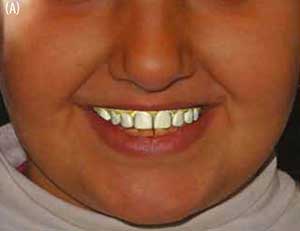Interdisciplinary full digital restorative treatment of a young patient with severe open bite and amelogenesis imperfecta: a case report

Published: 1 April 2021
Abstract Views: 651
pdf: 530
Publisher's note
All claims expressed in this article are solely those of the authors and do not necessarily represent those of their affiliated organizations, or those of the publisher, the editors and the reviewers. Any product that may be evaluated in this article or claim that may be made by its manufacturer is not guaranteed or endorsed by the publisher.
All claims expressed in this article are solely those of the authors and do not necessarily represent those of their affiliated organizations, or those of the publisher, the editors and the reviewers. Any product that may be evaluated in this article or claim that may be made by its manufacturer is not guaranteed or endorsed by the publisher.


 https://doi.org/10.23805/JO.2020.13.01.4
https://doi.org/10.23805/JO.2020.13.01.4








